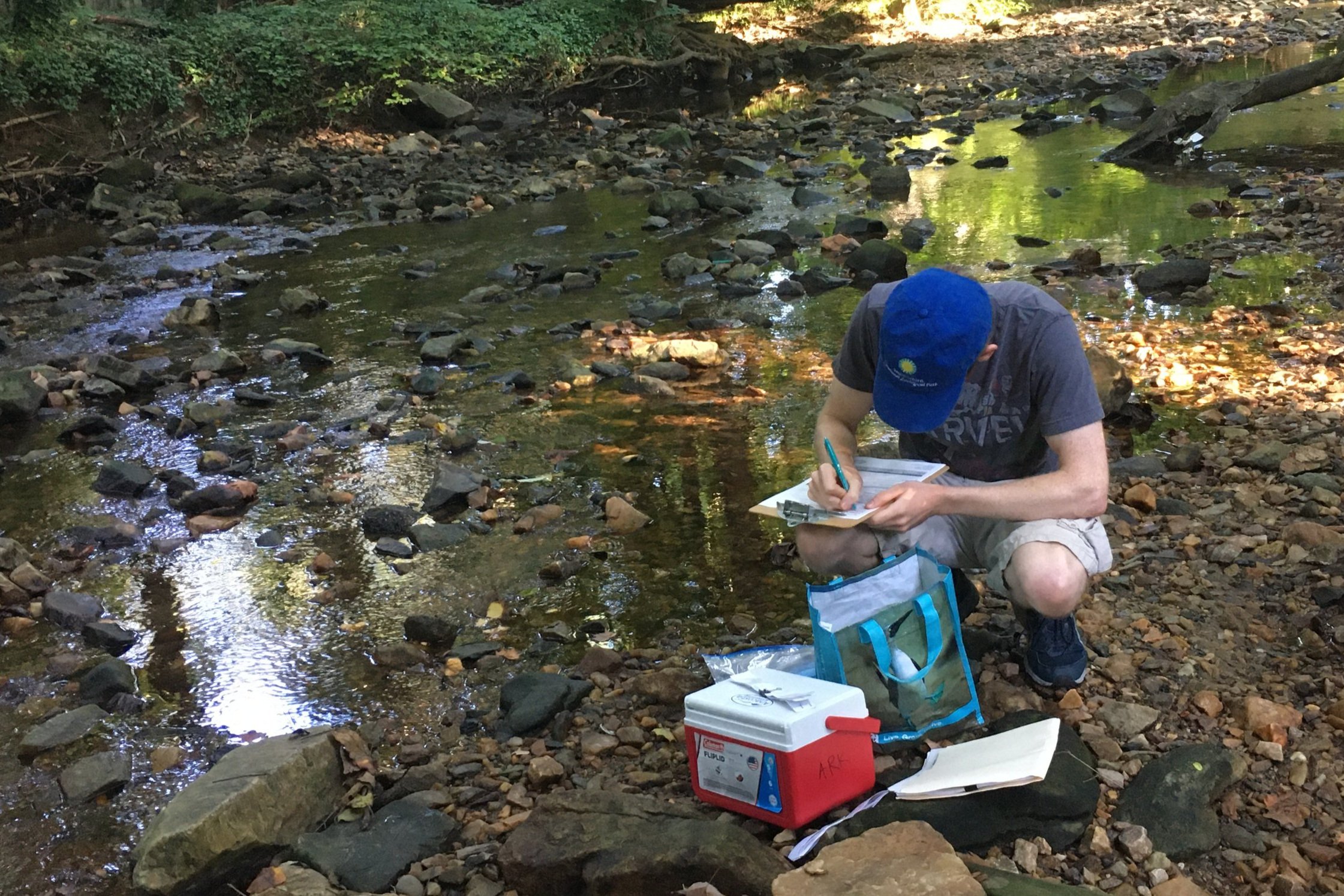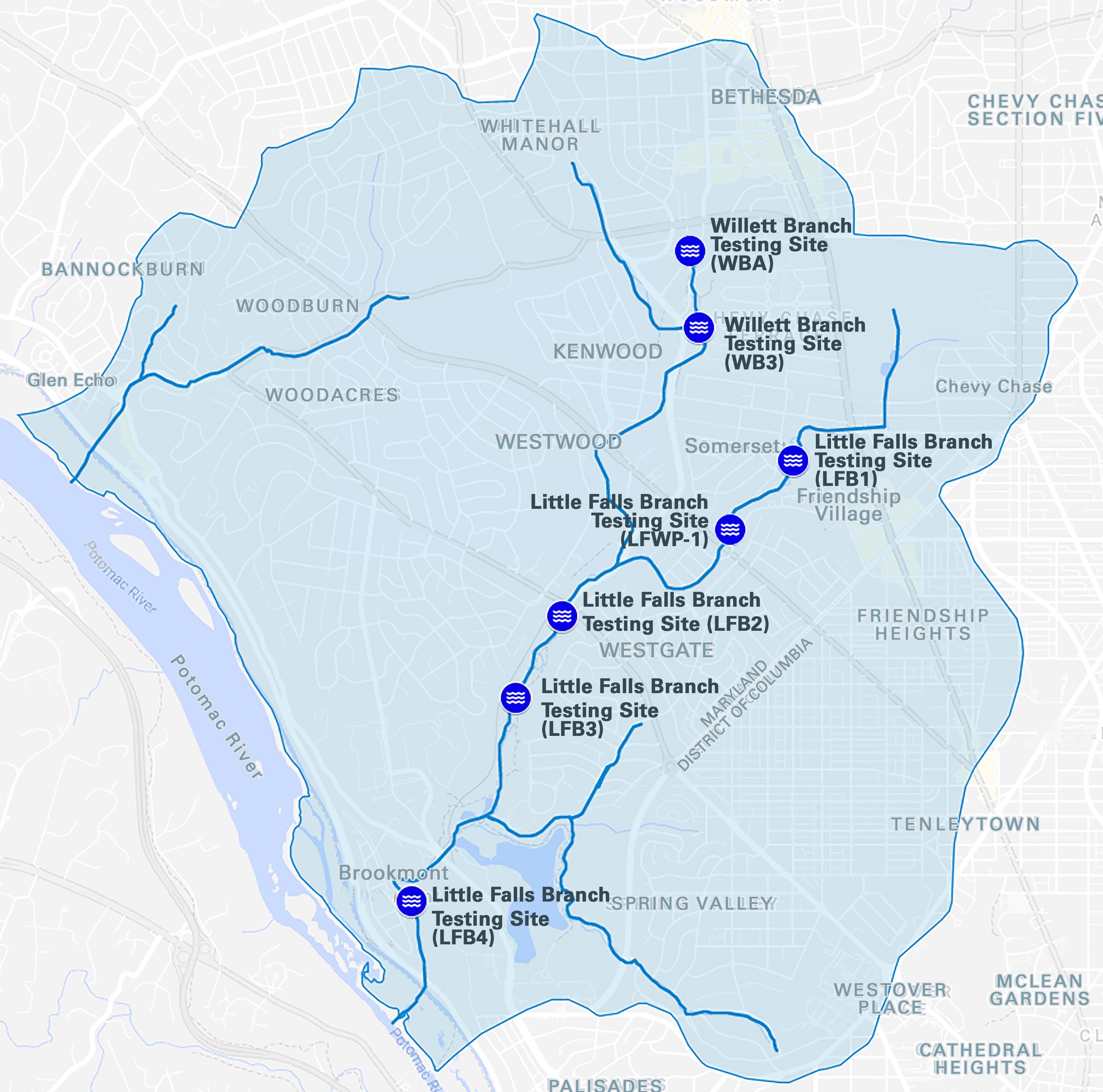Joe Barnes sampling the Little Falls Branch near the Willard Avenue Neighborhood Park.
For the third consecutive summer, the fecal bacteria levels in the Little Falls watershed have exceeded the Maryland State Standards for recreational water use - even for infrequent human contact. According to the 15 week study conducted at eight sites, both the Little Falls Branch and the Willett Branch fail to meet the criteria for safe water play at all locations.
Willett Branch Bacteria Levels reached as high as 24,999 MPN, the highest number our tests can count. The tests were conducted at two sites on the Willett Branch, which runs through downtown Bethesda underground emerging into the daylight by the Bethesda Pool near the Little Falls Parkway. After last year’s similar levels of pollution, Montgomery County agreed with our assessment that the source is human and has been investigating where the sewage is coming from. The County has posted signs along the Willett Branch warning of the high levels of fecal bacteria and set up a web page to track the clean-up progress.
Fecal Bacteria Testing Sites along the Willett and Little Falls Branches, Bethesda/Chevy Chase, MD
While the Little Falls Branch sites never reached the level of fecal bacteria pollution seen in the Willett Branch, all sites regularly saw numbers in excess of 1,200 MPN, three times the maximum number for safe water play. Little Falls Branch runs through the Town of Somerset and the Little Falls Stream Valley Park and into the Potomac River at Little Falls and is a popular stream for wading and other recreation.
Nitrate Levels indicate leaking sewers.
Our volunteers also tested the nitrate and nitrate levels of the two streams. Human activity produces excessive levels of nitrogen that can lead to harmful effects in the stream including a reduction in dissolved oxygen and over stimulation of plant growth. Nitrate levels of over 10 ppm represent a serious threat to drinking water. Nitrate levels over 1.00 ppm indicative of leaking sewer lines. Both sites tested on the Willett Branch and four of the sites on the Little Falls Branch had average level of over 1.0. This would be consistent with the idea that the source of our fecal bacteria is human.
The Complete Report is HERE. More information about our Bacteria Monitoring Program is HERE.
Thank you to Woody Stanley and Jane Mercer authors of this Report. The 2023 water quality data was collected by volunteer citizen scientists every week this summer. The findings in the report would not have not been possible without their dedicated effort. In no particular order, the LFWA extends a thank you to: Averill Simone, Emily Simone, Bobby Pestronk, Emily Cordas, Josh Nickerson, Eve Park, Henry Park, Daniel Park, Julie Steinberg, Maria Sokolowski, Sally Winthrop, David Kathan, Sarah Morse, Woody Stanley, and Audrey Steward


